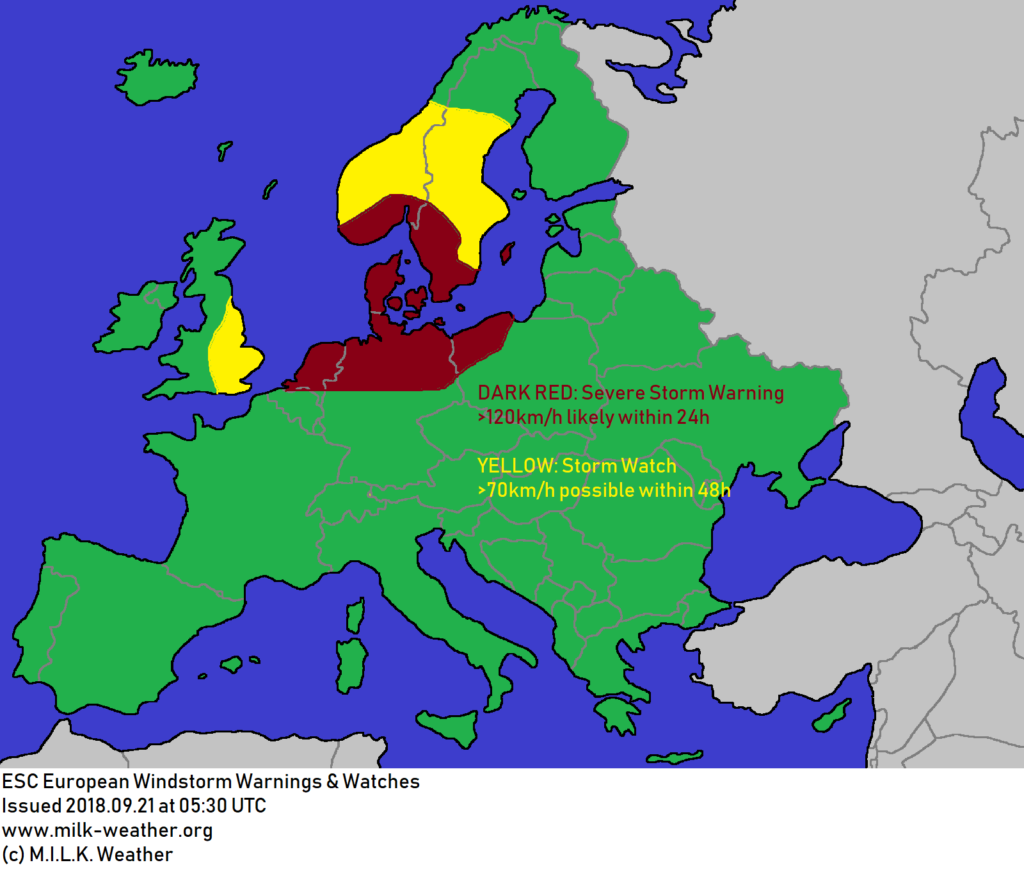
Find the English version below
Gestern zog – begleitet von Sturmböen bis zu 144 km/h – das Sturmtief Bennet rasant über Deutschland hinweg. Verbreitet wurde auch im Flachland, vor allem im Norden des Landes, schwere Sturmböen registriert – vielerorts wurden auch 100 km/h erreicht, so zum Beispiel in Berlin mit 104 km/h sowohl in Tegel als auch in Schönefeld. Zudem gab es an vielen Orten auch die ersten Gewitter des Jahres, die wiederum, mit verstärkten Sturmböen einhergingen. Zahlreiche Schäden und auch ein Todesopfer sind zu vermelden.
Der Wind hat im Großteil Deutschlands inzwischen nachgelassen, es können aber vor allem im Nordosten im Laufe des Dienstages noch einzelne Sturmböen auftreten, und auch an den Küsten besteht weiterhin Gefahr.
Der Rosenmontags-Sturm beschädigte quer über den Norden Deutschlands Dächer und entwurzelte Bäume. So blockierten umgestürzte Bäume unter anderem die Bahnrouten zwischen Hamburg und Puttgarten, zwischen Hamburg und Stade sowie zwischen Braunschweig und Salzgitter. Ebenfalls betroffen waren die Strecken von Hannover nach Berlin, Hamburg nach Passau, und Stralsund nach Karlsruhe. Es kam zu teils erheblichen Verspätungen.
Auch sturmbedingte Verkehrsunfälle gab es zu melden. Auf der Autobahn A14 in Brandenburg kam wegen einer Sturmböe ein LKW von der Fahrbahn ab, woraufhin eine Sperrung folgte. Auf der A392 in Braunschweig kippte ein Lastzug um; Fahrer und Beifahrer wurden leicht verletzt.
In Ochtrup, Nordrhein-Westfalen, kam ein Autofahrer ums Leben, als ein Baum auf sein Fahrzeug stürzte.
Text: Linus Höller
English
Accompanied by storm gusts of up to 144 km/h, storm “Bennet” raced across Germany yesterday. Severe storm gusts were registered throughout the lowland, and in many places, wind speeds exceeded 100 km/h, as, for example, in Berlin, where 104 km/h were registered at both Tegel and Schönefeld airports. Furthermore, many places received their first thunderstorms of the year which, in turn, brought intensified storm gusts of their own. The storm caused a fair amount of damage and even took one life.
The wind has lessened in much of Germany meanwhile, though especially in the northeast of the country, individual storm gusts are still possible throughout Tuesday, and stormy conditions persist at the coasts.
The carnival Monday storm damaged roofs and uprooted trees throughout northern Germany. Toppled trees blocked the rail routes between Hamburg and Puttgarten, Hamburg and Stade as well as between Braunschweig and Salzgitter. Also affected were the routes from Hannover to Berlin, Hamburg to Passau and Stralsund to Karlsruhe. There were major delays.
There were also reports of storm-induced traffic accidents. On the highway A14 in Brandenburg, a truck was pushed off the road by a storm gusts, which resulted in the highway being temporarily closed. On the Autbahn A392 in Braunschweig, a trailer was tipped over by the wind; the driver and passenger were injured lightly.
In Ochtrup, North Rhine – Westphalia, a driver lost his life due to a falling tree striking his car.
Text: Linus Höller













